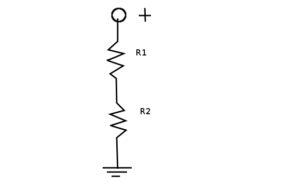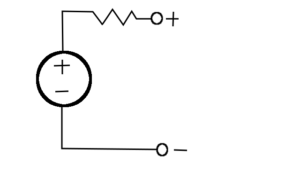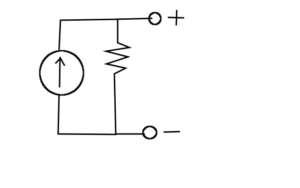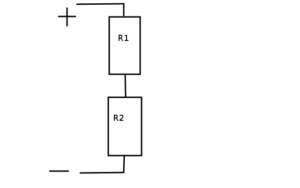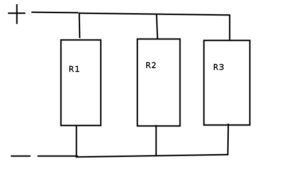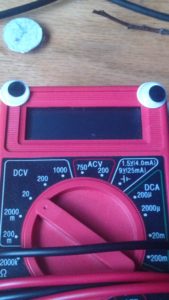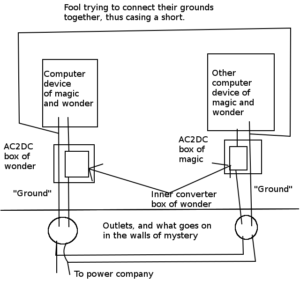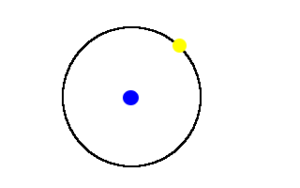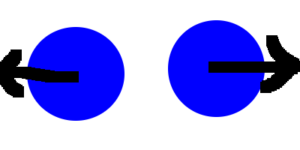Earlier in this series I told you how voltage can be thought of like the height that electricity starts at, and that it’s “height” is relative; however height can also be measured as an absolute, and so can voltage.
You can measure the height of a hot air balloon from the center of the Earth if you really want to, but your ruler won’t do that for you unless you can get it to reach the center of the Earth.
Similarly your multimeter won’t measure the absolute voltage unless you attach it to something that actually does have zero voltage. What exactly can have zero voltage? Do insulators have zero voltage? Does a rubber balloon have zero voltage? Not if you rub it against your hair.
Voltage is what comes from charge. Whenever you have charge you have voltage, and whenever you have voltage you have charge. If high voltages can kill you by putting too much current through your heart, then that means that too much charge can kill you.
Electrons and protons are dangerous little things. A small amount of them (like the amount in a charged balloon) isn’t enough to hurt you, but if there’s too much then that can cause problems. The problems come from the fact that having too many charged things (like electrons or protons) in a small space without an opposite charge to cancel them out will cause the voltage at any point near them to be too high.
This is sort of like how having too much mass in one spot will cause their gravity to become stronger. So how do you get those electrons/protons apart so that they’re not so concentrated and don’t have so much voltage? You let them enter a big conductor. Remember: like charges repel. If a bunch of electrons are all close to each other then they’re trying to get away from each other; however they can only move through conductors.
If you hook up a giant conductor to your giant, charged, helium balloon of death that is, for example, the size of the Earth then that will neutralize the threat. This is why any electronic with a metal case that plugs into the wall has a third prong on it.
That third bit of metal connects the metal case straight into the ground because the ground conducts electricity. If part of the circuit that connects directly to one of the two metal prongs on the plug touches the metal case, then the charge from the outlet will go into the ground, and hopefully not hurt you when you touch the metal case.
